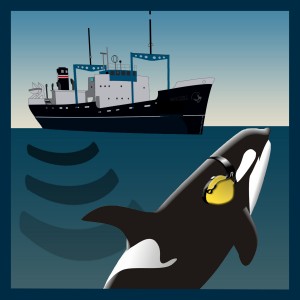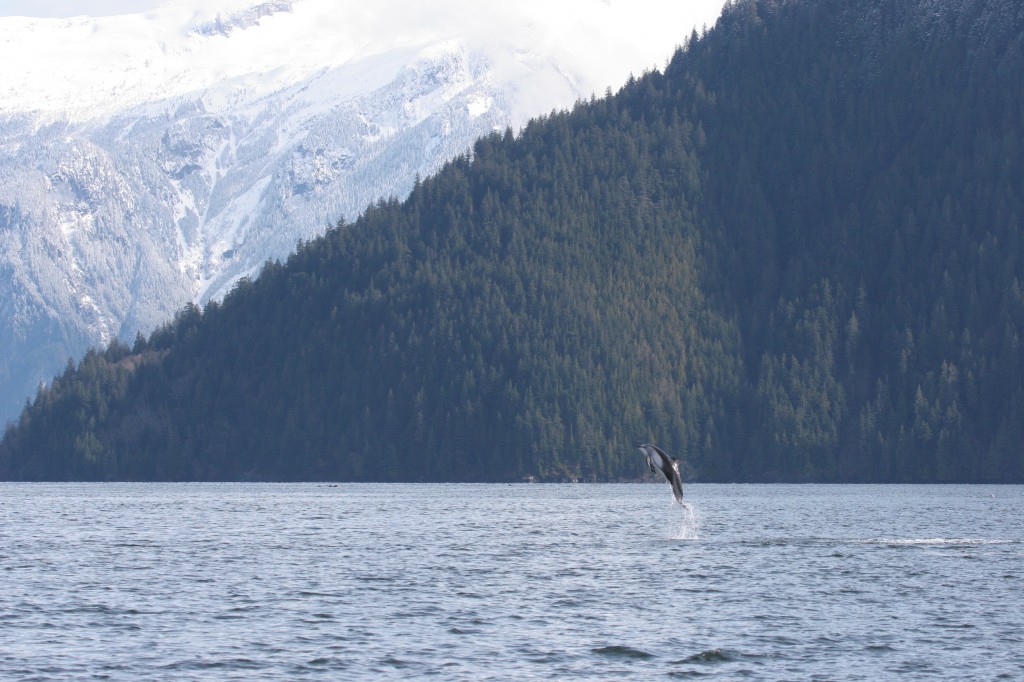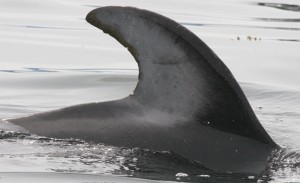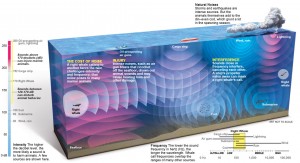Marine conservation highlights: 2010
1. A protected area for killer whales?
We kicked the year off with a paper published by Erin, Rob and Dr Dawn Noren in Animal Conservation proposing a Marine Protected Area for southern resident killer whales. It was profiled on NPR and in dozens of news stories. Our scientific advice fits nicely with the recovery objectives specified by Canada and the US, but uses a simple priority-setting approach: give the whales a quiet place to eat.
2. Whales, salmon and ocean noise
Rob spent 6 months as Canada-US Fulbright Research Chair at University of Washington to explore transboundary issues in marine conservation, using killer whales, salmon and ocean noise as themes. It was a hugely productive fellowship, and we loved hosting an efficient, collaborative workshop to estimate how much salmon it costs to feed southern resident killer whales. We miss Seattle – not only because of Molly Moon’s Grey Salted Caramel ice cream.
3. Pacific white-sided dolphins
So, come here often? Erin’s dolphin study leaped ahead this year with support from SeaDoc to encourage wider contributions to the photo-identification catalogue that our mentor,Alexandra Morton, initiated in the 1980s and maintained for more than 20 years. Are the dolphins of the Broughton Archipelago cosmopolitan, or do they like to stick close to home? Our partnership with SeaDoc will help us find out if the dolphins we see are a unique population or if they regularly move between BC and Washington State. We collected more photographs of dolphins, which will allow us to estimate abundance and track population health. We recorded dolphin calls and tweets, and saw newborn calves in the study area! Want to be part of the fun? Please send us your dolphin ID photos!
4. Collecting killer whale poop
Yup. Sounds messy and weird. But it’s actually a neat, non-invasive way to evaluate whether whales are stressed out by noise, and whether they’re finding enough to eat. We’ve initiated a proof-of-concept study, and are excited about the opportunity to partner with Prof Sam Wasser and his team in Conservation Biology at University of Washington.
5. Mapping where ships might collide with whales
When ships strike whales, it is often fatal. Rob and Dr Patrick O’Hara at Environment Canada authored a paper to predict and identify where these collisions are most likely to occur. Rob presented the work at the International Whaling Commission’s Scientific Committee meeting in Morocco and was invited by NOAA to offer scientific advice on vessel strikes to protect blue whales in Santa Barbara Channel, California.
6. Ocean noise measuring and mapping
Pop-up study 3.0! Yes, our chronic ocean noise study has grown into a trilogy. This year, we deployed and retrieved 6 hydrophones, our most ever! Thanks for field support from Hawk Bay, Straitwatch, Ocean Rose Coastal Adventures, Orcalab, Salmon Coast Field Station, Silver King Ventures and our friends at Cornell. This brings our total to 12 autonomous hydrophones sent to the bottom of the sea, called back and sent safely home to New York. Wow! Mixing saltwater and electronics, on purpose. The “on purpose” part is new for us. Soon we can say which parts of BC coastal waters are quiet, loud or somewhere in between. Whales and dolphins need a quiet ocean to find food and mates. Our work with Cornell allows us to model how much acoustic habitat whales currently lose due to shipping noise; and how much more would be lost if oil tankers started using Douglas Channel. Next, we plan to screen the tens of thousands of hours of recordings for whale and dolphin calls (want some boat noise for your iPod?). In 2011, we are integrating our acoustic work into multi-stakeholder marine spatial planning exercises to ensure that marine protected areas can be built with a quiet ocean in mind. We’re calling it our Quiet Ocean Campaign.
7. Humpback whales, oil tankers and critical habitat
Like most British Columbians, we are concerned about proposals to build an oil pipeline from the Alberta Tarsands to the Great Bear Rainforest. We’re thrilled to be working withCetacealab and the Gitga’at Nation to estimate how many humpback whales use the waters along the proposed oil tanker route. This area has been proposed as critical habitat. Janie Wray, Hermann Meuter and Chris Picard have been collecting humpback whale data for years, and it was great fun to apply the skills we’ve been honing on our dolphin study to a valuable humpback whale study that has immediate conservation applications.
8. Sharks in British Columbia.
Did you know there tens of thousand of sharks in BC? We didn’t either. But as January Jones says, ‘we shouldn’t be scared of sharks, we should be scared for them’. Rob, with shark-experts, Tom Okey, Scott Wallace and Vince Gallucci reveal the goods in their new shark paper. Or, you can read all about it in this Vancouver Sun Shark week article.
9. Launching our website (www.oceansinitiative.org)
We resolve to keep in touch in 2011 a little better than we did in 2010. Thanks to Sandy Buckley for the great logos, and Sarah Bray and her team for our outstanding new site. The flexible WordPress system allows us to update periodically, and add content like photos, video and audio that we can’t publish in a traditional print journal. If you want to receive updates from us auto-magically, please enter your e-mail address in the “Get In Touch” box here. If not, don’t worry: we won’t spam you.
10. From the ‘Home of the killer whale’ to the ‘Home of Golf’
Pass the haggis. All of us (Erin, Wishart-the-dog and Rob) are ending the year in St Andrews, Scotland, where Erin is writing her PhD thesis on Pacific white-sided dolphins, and Rob is analyzing our acoustic data as part of his top-ranked Marie Curie Fellowship at the University of St Andrews, Sea Mammal Research Unit. Yes, there are dolphins and killer whales in Scotland, and also some gifted scientists to offer advice and ideas.
Please check out our site for frequent updates in 2011. We are happy and busy in Scotland with data analysis and writing, but part of us is still at home in BC. Fortunately, with our spiffy charitable account at Aeroplan, we’re raising enough donations of Aeroplan frequent-flyer miles to come home to the Pacific Northwest for an amazing, cost-effective dolphin field season this spring. (We’re working on offsetting our carbon footprint, too.) We hope to see you in BC this spring.
Thanks again for working with us. It’s been a tremendous year, and we’re excited about what 2011 will bring. We wish you all the best for a happy and healthy and productive new year.
Oceans Initiative
Erin and Rob







